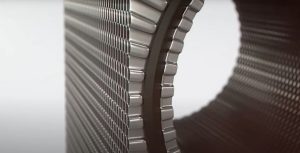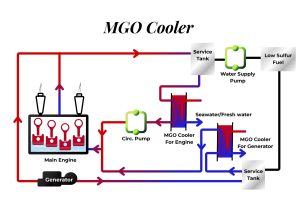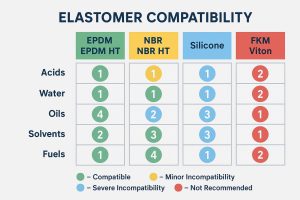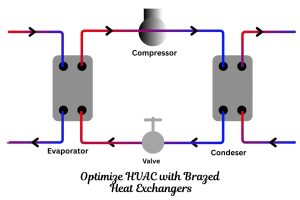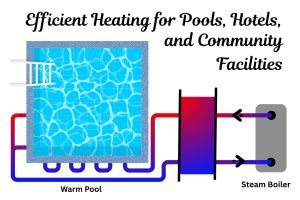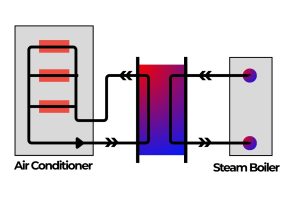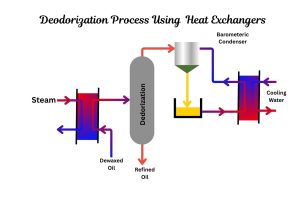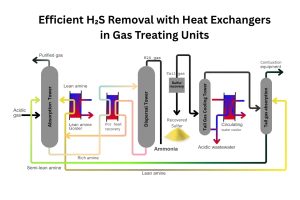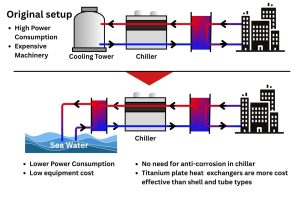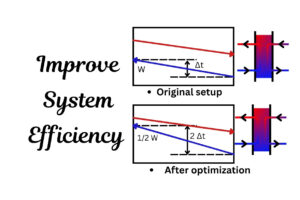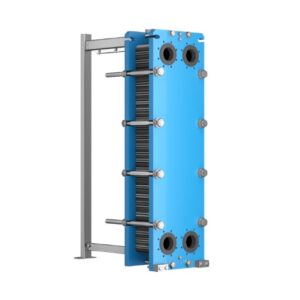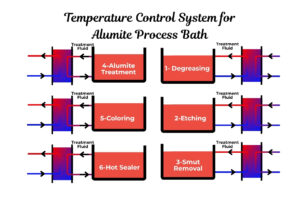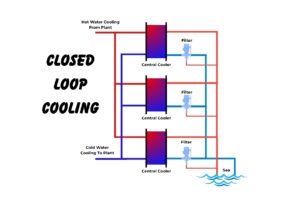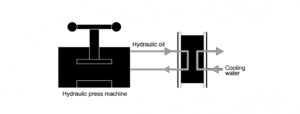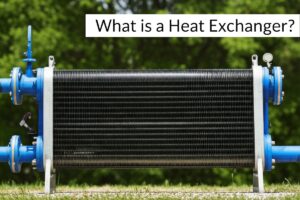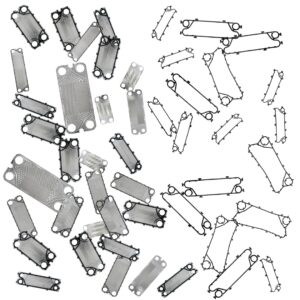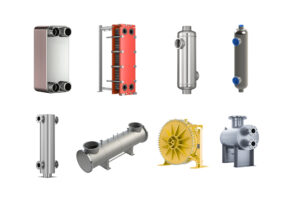Unveiling the Silent Workhorses: Why Heat Exchangers Are Vital in Modern Industry
Have you ever considered the hidden powerhouses that keep our world running, from the fuel in our cars to the warmth in our homes? Meet the heat exchanger, a device whose ingenuity has quietly shaped industrial processes for centuries. While seemingly simple, these unsung heroes facilitate the crucial transfer of thermal energy, making countless modern applications possible.
What’s the Story Behind Heat Exchangers?
The concept of transferring heat from one fluid to another isn’t new. Early forms of heat exchange can be traced back to basic heating systems and even natural phenomena. However, the systematic engineering and widespread industrial application of dedicated heat exchangers truly began to flourish with the advent of the Industrial Revolution. As industries grew and demanded more efficient ways to manage thermal energy, designs evolved from rudimentary coils and tanks to sophisticated, compact units capable of handling immense pressures and temperatures. This continuous innovation has made them indispensable in nearly every sector where precise temperature control or energy recovery is essential.
What Kinds of Heat Exchangers Are Out There?
Just as every problem demands a unique solution, there’s a specialized heat exchanger for almost every thermal challenge. Understanding the different types helps in selecting the right tool for the job:
- Plate Heat Exchangers: These are like a deck of cards, but instead of pictures, they have thin, corrugated plates. Fluids flow between alternating plates, allowing for efficient heat transfer. Their modular design means you can easily expand or clean them, making them popular in various industries, from food processing to HVAC.
- Welded Block Heat Exchangers: For the toughest environments, where aggressive chemicals or extreme temperatures are the norm, these fully welded units stand strong. Without gaskets, they offer exceptional durability and require minimal upkeep, often found in petrochemical plants or offshore platforms.
- Shell and Plate Heat Exchangers: Imagine a powerful fusion of traditional shell-and-tube designs with the compact efficiency of plates. These hybrids offer high performance and a smaller footprint, balancing robust construction with effective heat exchange.
- Tubular Heat Exchangers: These are perhaps the most classic design, featuring tubes within a larger shell. One fluid flows through the tubes, while the other flows around them in the shell. They are versatile and can be designed for a wide range of pressures and temperatures.
Why Are Heat Exchangers Crucial in Petroleum Refining?
The petroleum refining industry is a prime example of where heat exchangers play a non-negotiable role. Refining crude oil into everyday products like gasoline, kerosene, and jet fuel relies heavily on precise temperature management and energy recovery, processes where heat exchangers shine.
How Does Crude Oil Get Prepared for Processing?
Before crude oil can be broken down, it often needs to be “desalted.” This involves removing impurities like salts that could cause corrosion or fouling in downstream equipment. Water is introduced to the crude, and an electrical charge helps separate the salts, which are then flushed away with the cleaning water. Heat exchangers are vital here, often preheating the crude and cleaning water to optimal temperatures for efficient separation.
How is Crude Oil Separated into Useful Products?
The heart of refining is distillation, a process that separates crude oil components based on their different boiling points.
- Atmospheric Distillation: In tall columns, crude oil is heated and vaporized. Lighter components (like naphtha and benzene) rise to the top and condense, while heavier oils remain at the bottom. Heat exchangers are critical for recovering heat from hot product streams to preheat incoming crude oil, significantly reducing energy consumption and improving overall efficiency.
- Vacuum Distillation: Heavier oils from the atmospheric column, which would require dangerously high temperatures to distill at atmospheric pressure, are processed in a vacuum distillation column. By reducing the pressure, these heavy oils can be separated at lower temperatures, preventing thermal degradation. Again, heat exchangers manage the heat input and recovery throughout this critical process.
What About Removing Impurities Like Sulfur?
Before refined products are ready, impurities like sulfur must be removed. This process, known as desulfurization, often involves mixing the raw oil with hydrogen gas and passing it through a reactor. Heat exchangers are used to preheat the feed mixture and cool the treated products, ensuring the chemical reactions occur efficiently and safely. They also play a role in removing acidic gases that arise from sulfur and ammonia content.
Where Does Hydrogen Come From in a Refinery?
Oil refineries consume a substantial amount of hydrogen gas for various processes, including hydrorefining and desulfurization. Hydrogen is typically produced through processes like steam reforming. Heat exchangers are frequently employed as condensers in these hydrogen production units, cooling and separating the desired hydrogen gas from other byproducts.
How is Sulfur Recovered from Refinery Waste Streams?
The acidic gases removed during desulfurization, primarily hydrogen sulfide (H₂S), are highly corrosive and environmentally harmful. They are often treated in specialized units, where heat exchangers facilitate the temperature control of various circulating amine solutions used to absorb these acidic gases. This process ultimately allows for the separation and recovery of sulfur, often as a valuable crystalline product.
What Are the Most Common Mistakes to Avoid with Heat Exchangers?
Even the most robust equipment can falter without proper care. Avoiding these common pitfalls can significantly extend the life and efficiency of your heat exchangers:
- Ignoring Regular Maintenance: Skipping routine checks and cleaning leads to fouling, corrosion, and diminished performance. Regular inspections can catch minor issues before they become major problems.
- Improper Cleaning: Using the wrong cleaning agents or methods can damage plates and gaskets, leading to leaks and reduced efficiency. Always follow manufacturer guidelines.
- Over-Compression During Assembly: When reassembling plate heat exchangers, over-tightening the plates can cause irreversible damage to the plates and gaskets, affecting sealing and performance. Always adhere to the unit’s specified closing dimensions.
- Incorrect Gasket Installation: Gaskets are crucial for sealing. Misaligned, damaged, or aged gaskets are a primary cause of external leakage. Ensure proper placement and replace them as part of a preventative maintenance schedule.
- Neglecting Leaks: Even small leaks can escalate quickly, leading to contamination, fluid loss, and equipment failure. Address any signs of leakage immediately, determining whether the leak is internal (often plate-related) or external (often gasket-related) to apply the correct fix.
- Using Non-Standard Parts: While seemingly cost-effective, using spare parts that aren’t specifically designed for your unit can compromise performance, lead to premature failure, and void warranties. Always opt for high-quality, compatible replacements.
Where Do Heat Exchanger Materials Come From?
The performance and longevity of a heat exchanger are directly tied to the materials it’s made from. Common choices include stainless steel, titanium, and various alloys, selected based on the fluids being handled, operating temperatures, and pressures. These materials are sourced globally, with a focus on their resistance to corrosion, high thermal conductivity, and mechanical strength. The ongoing development of new materials continues to push the boundaries of heat exchanger applications.
Frequently Asked Questions About Heat Exchangers
What is the primary function of a heat exchanger?
The primary function of a heat exchanger is to efficiently transfer thermal energy from one fluid to another without the two fluids mixing. This process can be used for heating, cooling, condensation, or evaporation.
How do I choose the right heat exchanger for my application?
Selecting the right heat exchanger depends on several factors, including the type of fluids, their flow rates, desired temperature changes, available space, pressure requirements, and potential for fouling. Consulting with experts and using specialized selection tools can help. You can also use our GPHE Selection tool to guide you.
What causes heat exchanger fouling?
Fouling occurs when deposits accumulate on the heat transfer surfaces, reducing efficiency. Common causes include scaling from mineral deposits, particulate matter, corrosion products, chemical reactions, and biological growth. Regular cleaning and proper fluid treatment are essential to prevent fouling.
How often should heat exchanger gaskets be replaced?
The replacement frequency for heat exchanger gaskets depends on the operating conditions (temperature, pressure, chemical environment), the type of gasket material, and the specific application. Generally, gaskets should be inspected during maintenance and replaced if they show signs of hardening, cracking, or leakage. High-temperature or aggressive applications may require more frequent replacement.
Can I calculate heat exchanger performance myself?
Basic heat exchanger calculations can be performed using various formulas, but comprehensive performance analysis often requires specialized software and engineering expertise. For quick estimates, you might find a heat exchanger calculator useful.
Where can I find spare parts for my heat exchanger?
Spare parts for heat exchangers, including gaskets, plates, and frames, are available from various suppliers. It’s crucial to source parts that are compatible with your specific unit. For high-quality, equivalent spare parts, consider exploring options at GPHE Spare Parts.
Ready to Optimize Your Thermal Processes?
Understanding the intricacies of heat exchangers is key to unlocking efficiency and reliability in industrial operations. Whether you’re looking to select a new unit, source quality spare parts, or need expert advice, the right partner can make all the difference.
For inquiries or to explore solutions tailored to your needs, don’t hesitate to contact us.
A Note from Heating Formula:
At Heating Formula, we specialize in supplying high-quality heat exchangers and spare parts that are equivalent to OEM standards. Our extensive range of products provides reliable and efficient solutions for various industries, ensuring your operations run smoothly with parts that offer perfect fit and performance.

